Such stillness, you can almost feel the vines sleeping. It’s the time of the “taille.”
This photo of a parcel of Cabernet Sauvignon was taken in December, before pruning. Pruning marks both the end of the year and the beginning of a new one. While the vegetation is dormant, it’s time to cut away what is not useful from last year and establish the possibilities for this year. Far from a metaphor, it’s a task of precise hand labor, and it’s all about making choices.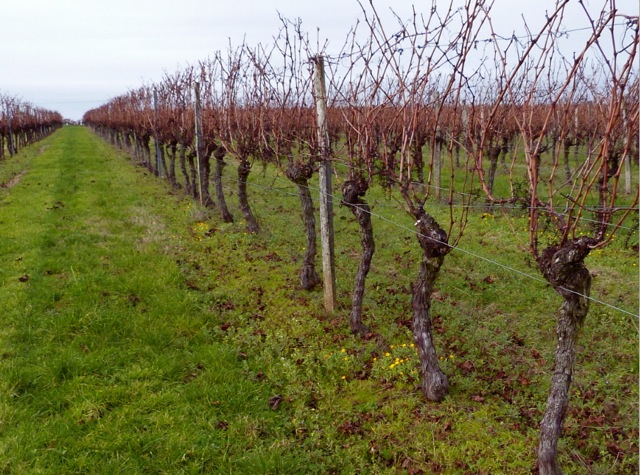
Not so easy. Here’s an example – you can see the principal branch arching from the trunk (the “pied de vigne”) to the left – it carried the main fruit bearing shoots for the 2012 harvest, and will now be cut off. In fact everything but one branch that will support the 2013 harvest must be cut. That, plus a tiny shoot which will establish the harvest for 2014. From a mass of branches per vine, the pruner’s choices have a crucial influence on quality, health and yield.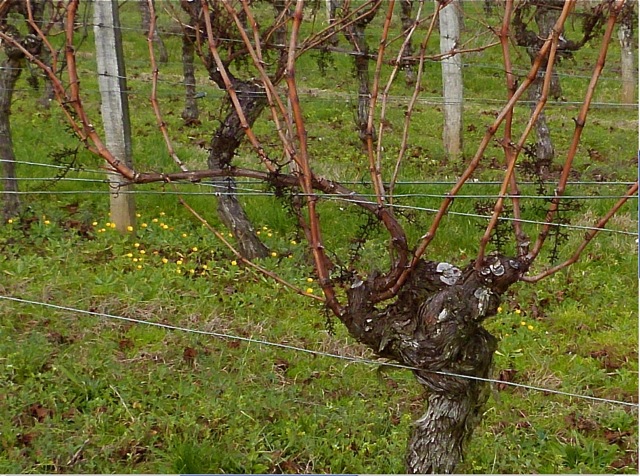 Off hidden in a parcel of Merlot, I hear muted voices and the whir of pruning sheers. The men are concentrating so hard they don’t hear me coming (until Dante, our dog, comes racing up.) I find Denis standing in front of a tangle of vine shoots, studying, before he comes at it with his cutters. The subject of the “taille” is one of the most important in viticulture; it covers many chapters in my text book but is not fully learned in class, or mastered quickly. Styles of “taille” vary greatly depending on the region, varietal, local custom and objectives of the vigneron for the wine. Denis started learning when he was a teenager, helping his father in this vineyard. He tells me every worker leaves a signature on the plant that influences its’ growth for years to come, so he’s picky about who he allows to touch the vines.
Off hidden in a parcel of Merlot, I hear muted voices and the whir of pruning sheers. The men are concentrating so hard they don’t hear me coming (until Dante, our dog, comes racing up.) I find Denis standing in front of a tangle of vine shoots, studying, before he comes at it with his cutters. The subject of the “taille” is one of the most important in viticulture; it covers many chapters in my text book but is not fully learned in class, or mastered quickly. Styles of “taille” vary greatly depending on the region, varietal, local custom and objectives of the vigneron for the wine. Denis started learning when he was a teenager, helping his father in this vineyard. He tells me every worker leaves a signature on the plant that influences its’ growth for years to come, so he’s picky about who he allows to touch the vines. 
Since every plant in a parcel is different, intuition and experience allow a seasoned worker to quickly size up each plant in order to make choices to achieve balance. Interestingly, “vigor” in a vine is a paradox: you want “some but not too much, and in the right places.” That expression “wine has to suffer to be beautiful,” starts to make sense. The soil must provide the right kind of nutrients, but not too much. Our vineyard is planted on a limestone plateau, so over time the roots dig deep down and fritter away at the limestone to access it for mineral nutrition, which is one thing that gives this terroir its particular taste. Proper pruning affects the vigor by reducing the eventual number of grapes that will compete for sunlight and nutrients.
These days many people use motorized pruning shears. They’re quite expensive, but if you’re working 7 hours a day, cutting hundreds of plants per day for several months, they reduce the serious wear and tear on your wrists and fingers. But it’s a tool with potential curses: the weight of the battery carried on your back; the possibility that one little distracted motorized snip can do away with a finger. Some people refuse to use them at all.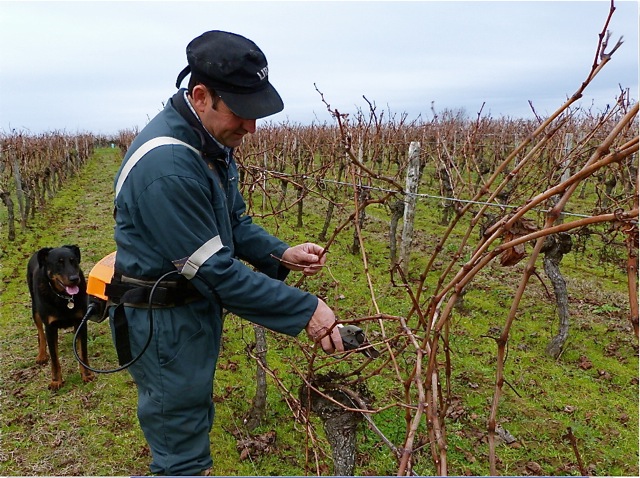
To me it looks like a sculptor at work. First, cutting away the obviously extraneous, in order to expose the most important lines. Then the choice. Apart from the ongoing decisions about shaping the general architectural structure of each plant, (the “charpente”) the major decision of the taille is choosing which branch will become the source branch for harvest 2013. To complicate the task further, not only is Denis thinking about this year’s crop, he must plan for harvest 2014. Opposite the principal branch, he chooses a tiny shoot that will become the main branch for harvest 2014.
Once he’s selected the branch for 2013, he needs to think about how many of its’ “eyes” to cut off. The fruit bearing parts will sprout from the remaining eyes, and thus determine the yield. Again it’s about balance. Since we want to emphasize quality over quantity to make Bordeaux Superiéur, we cut some of the eyes now so that the plant does not over- produce in the spring. We want the leaves to have maximum exposure to sunlight to ensure maturity, and for each cluster of grapes to be well aerated to avoid problems like mildiou. This is another complex decision that depends on knowledge of the fertility of the plant in front of you and years of experience of past harvests and effects of climate. Since a “bad year” might reduce the yield anyway, I wonder if Denis tosses salt over his shoulder as he eliminates eyes, hoping the year will be clement.
And here, the “after” picture. Our hopes for 2013 are now gently arched and tucked under the wire. The eyes will send out shoots rising to the sun. It’s hard to imagine that by May this severely pruned plant will be bursting with leaves and buzzing bees.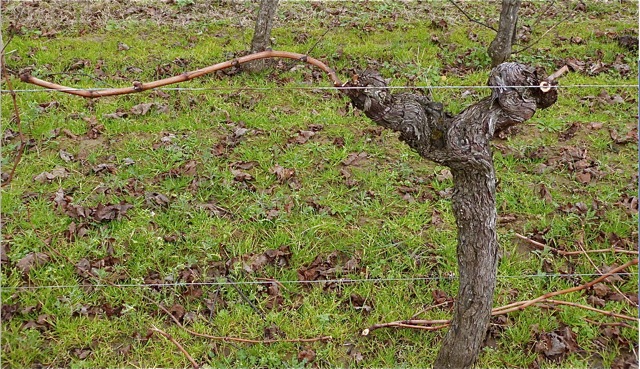
Footnote:
Some people love driftwood on the beach. I love the old “pieds the vignes.” I used to love them because they make great smoke flavor for bbq’s. Now I love them for their ancestral character. We have one parcel that is around 50 years old, the others range from 8 to 37 years. My heart was heavy when I found this still-life pile, brought down by mushrooms and insects that attack the wood. If “vieilles vignes” really do make the best wine, our constant challenge is the preservation of this patrimony.

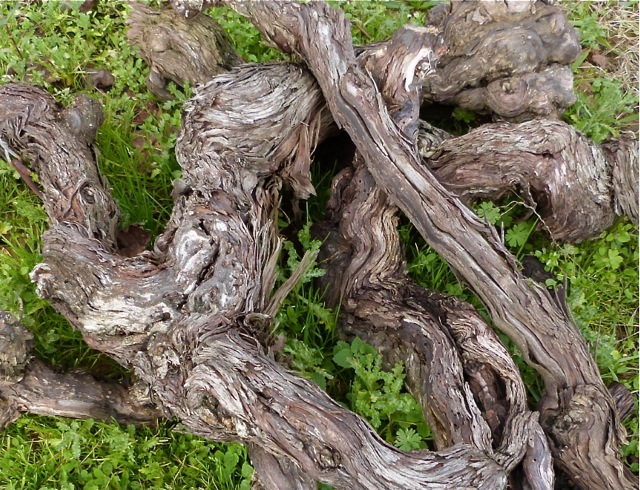
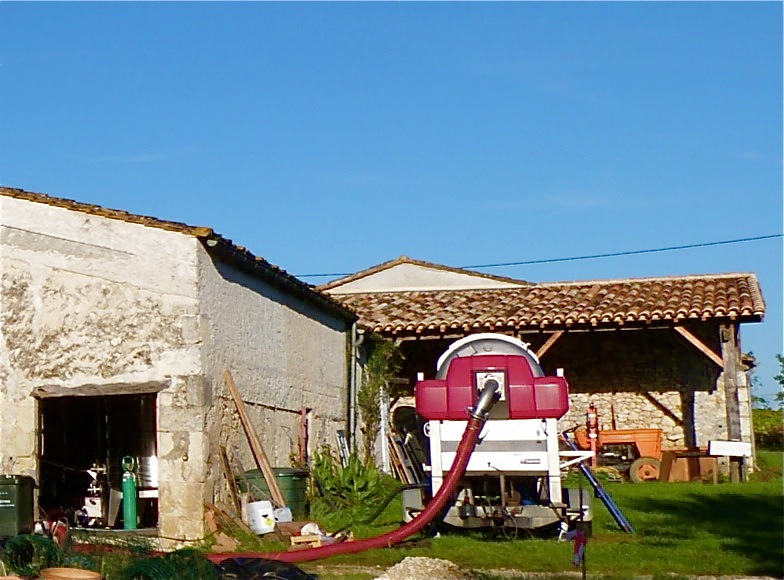
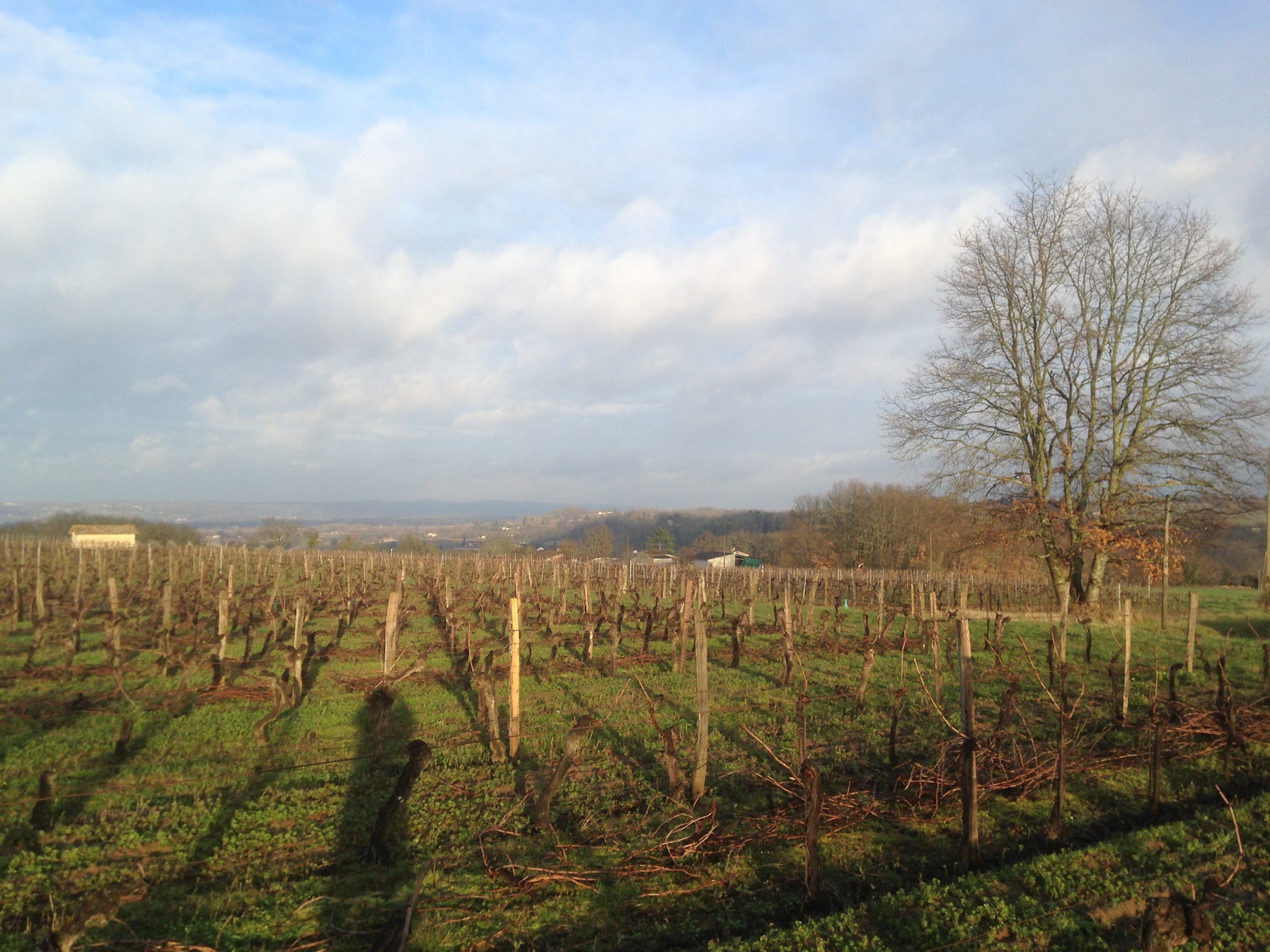
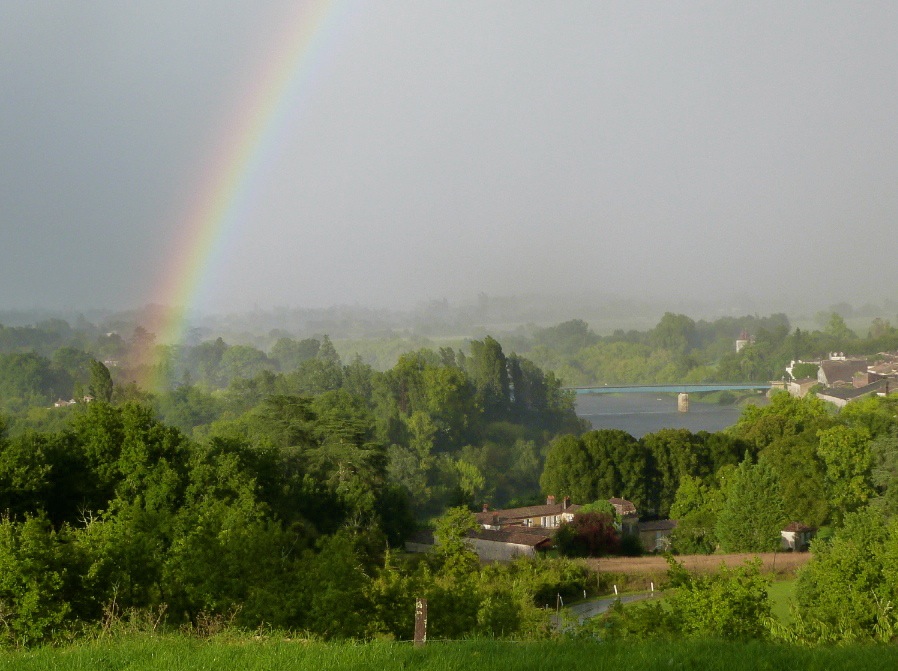

2 thoughts on “Pruning the Vineyard in Winter”
A perfect part of vine making calendar !
Thank you for such an informative post!